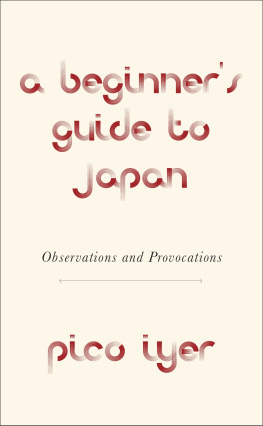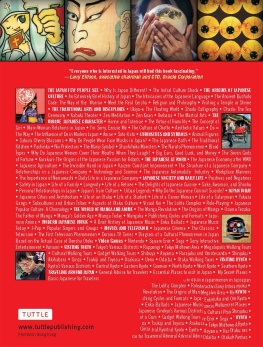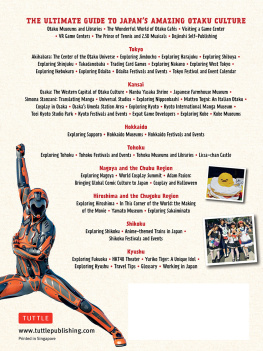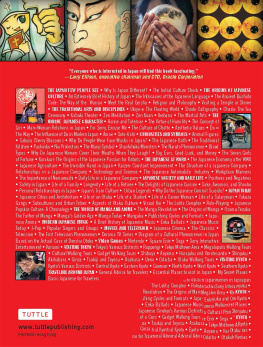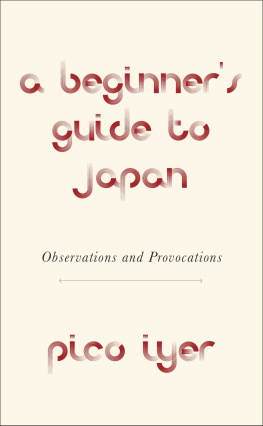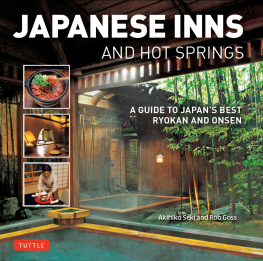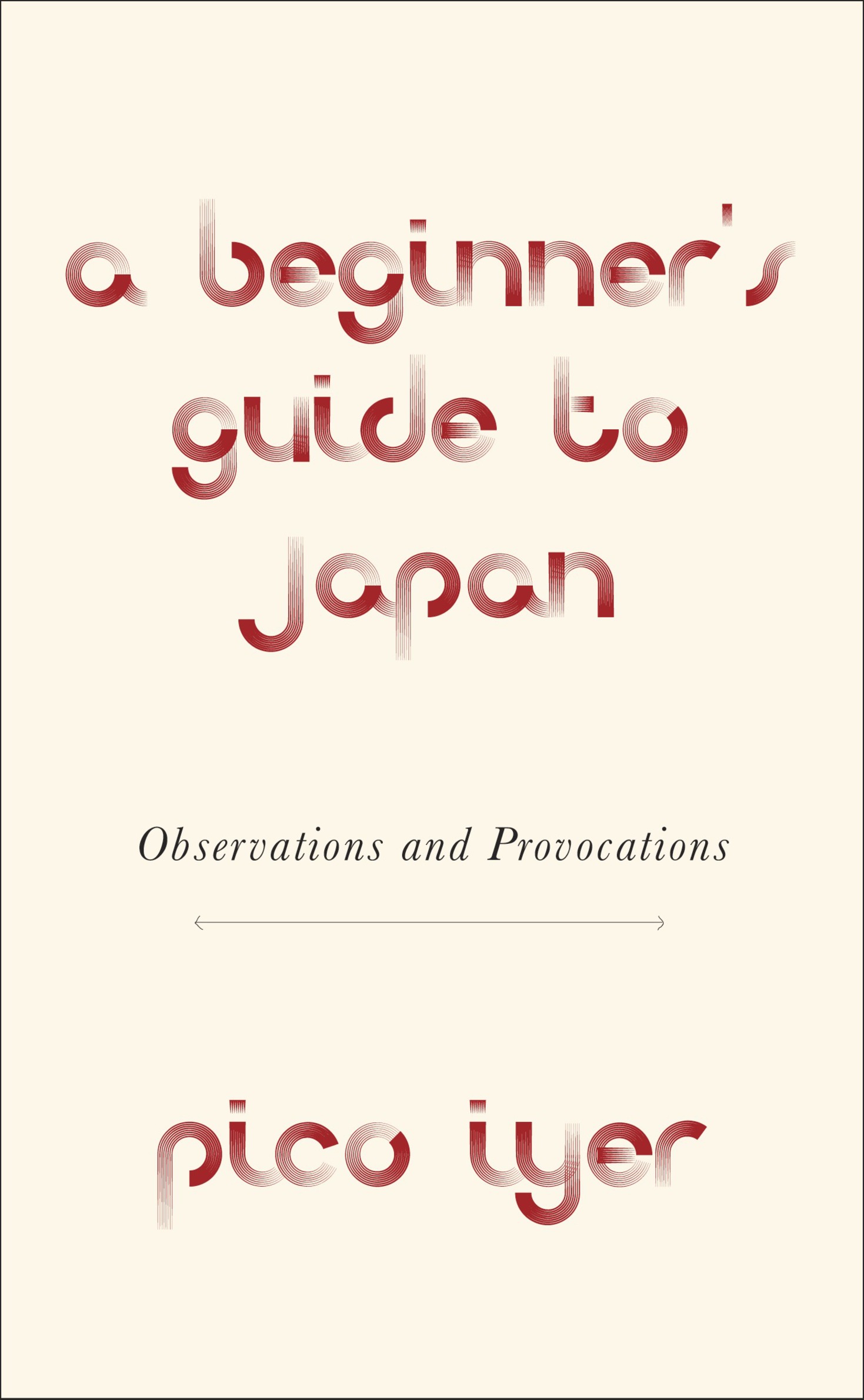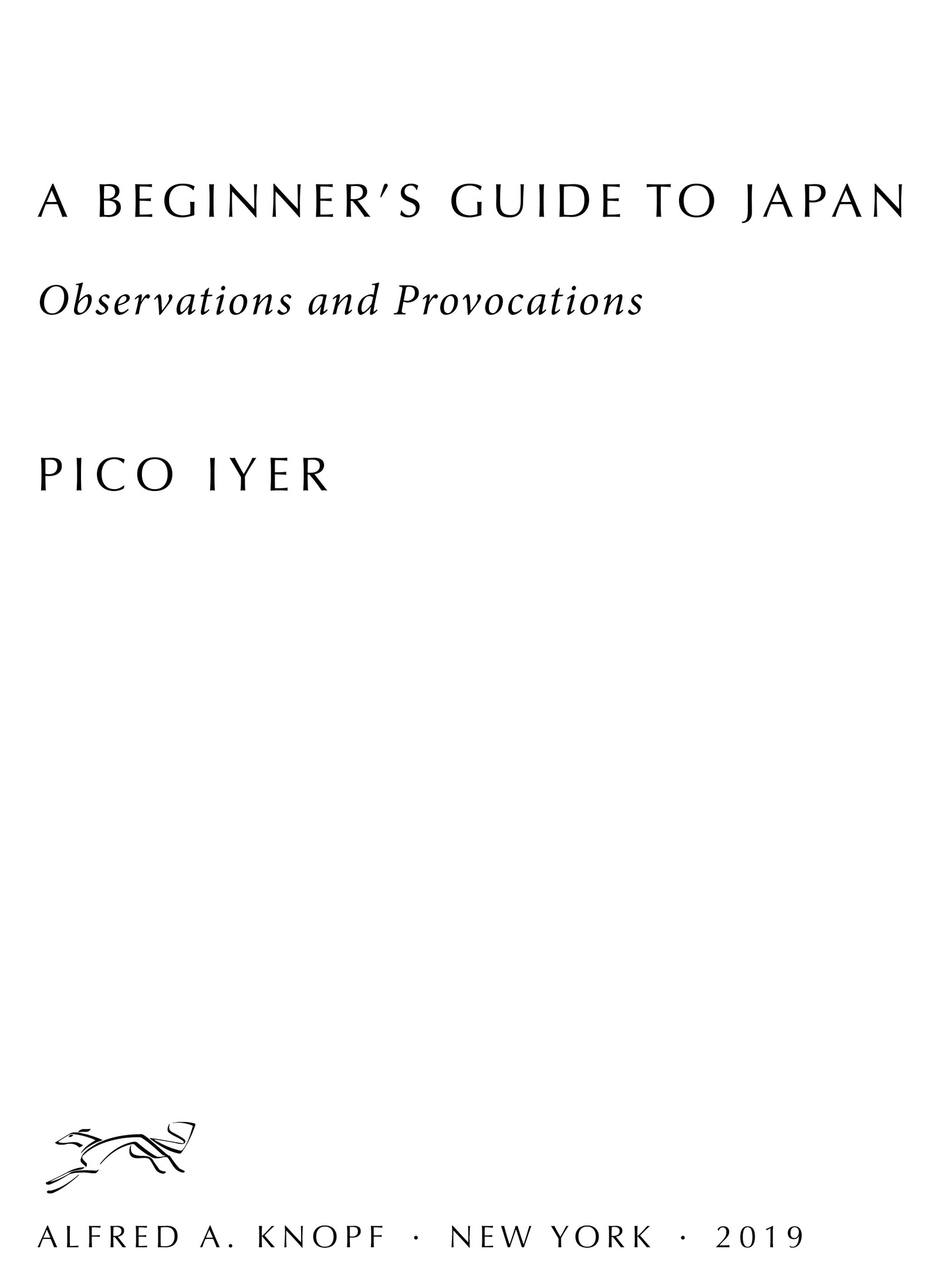THIS IS A BORZOI BOOK PUBLISHED BY ALFRED A. KNOPF
All rights reserved. Published in the United States by Alfred A. Knopf, a division of Penguin Random House LLC, New York, and in Canada by Random House of Canada, a division of Penguin Random House Canada Limited, Toronto.
Knopf, Borzoi Books, and the colophon are registered trademarks of Penguin Random House LLC.
Names: Iyer, Pico, author.
Title: A beginners guide to Japan : observations and provocations by Pico Iyer.
Description: First edition. | New York : Alfred A. Knopf, 2019.
Identifiers: LCCN 2018038539 (print) | LCCN 2018039527 (ebook) | ISBN 9780451493965 (ebook) | ISBN 9780451493958 (hardcover) | ISBN 9781524711733 (open market)
Subjects: LCSH : Iyer, PicoTravelJapan. | JapanDescription and travel.
Classification: LCC DS 811 (ebook) | LCC DS 811 . I 95 2019 (print) | DDC 952.05dc23
Attention, taken to its highest degree, is the same thing as prayer.
SEVERAL GRAINS OF SALT
Ive been living in western Japan for more than thirty-two years, and, to my delight, I know far less than when I arrived. A land of streamlined surfaces gives you very much what you expectand so much you didnt expect, under the surface, that you dont know what to do with it. The home of collected inwardness has also shown me daily how much, as Proust observed, a change in the weather is sufficient to recreate the world, and ourselves.
Ive never studied Japan or worked here, and I stay in Nara on a tourist visa to remind myself how out-of-it I remain. I speak the language as a two-year-old girl might, since such Japanese as I know Ive picked up from my wife, and in Japan even the word for I is different for a woman and a man. But Ive been with my Kyoto-born wifeand our entirely Japanese kidsfor more than thirty-two years now, most of them in an anonymous suburb where no other foreigners are to be seen. I seldom speak English in Japan, and in any case Japan has taught me how deeply the truest things lie beyond the reach of any language.
Much of this book may infuriate anyone who knows Japan; it infuriates me most of the time. Assertions in one section seem to contradict those in another, and what appears to belong in the temple appears in a section on the love-hotel, and vice versa. A lot of what I ascribe to Japan clearly applies to much of East Asia, and some of what I see in Kyoto youd never find in more rural areas.
No matter. These are simply provocations, opening lines designed to quicken you to better comebacks of your own. The opposite of a great truth, as they say in the temples of Kyoto, is also true. Ive tried to order my salvos so you travel, as most of us do, from the noisy, congested streets to impeccably well-made-up interiors to, at last, that private domain where you cant even think in terms of Japan or the West. But if you read out of sequence in this fan-shaped book, now on a jam-packed train, now in a noiseless temple, youll be taking in the country as most of us do, bumping from the strange to the familiar and back again.
I call this a beginners guide not only because its aimed at beginners, but mostly because its written by one. Being in Japan has taught me to say, I wonder, more often than I think. The first rule for any foreigner in Japan is not to talk of this-or-that; the second is never to take anything too seriously.
ON THE STREETS
THE ENIGMAS OF ARRIVAL
There are eleven arrows on the sign above you, as you disembark in Kyoto Station. They point left, right, straight ahead and backwards. In the middle is a question mark.
Platform 0 is close to Platforms 31 and 32, and a large Restaurant Guide board informs you that there are one hundred and seven dining options around the station alone. There are also twenty-two hotels in the immediate vicinity, just one of which offers fifteen banquet halls, five hundred and sixteen rooms, a halal menu, a clinic, a photo salon and a church.
So much is available, almost nothing can be found. Youre in a living Web site of sortsboxes and links popping up on every side, leading to art gallery and Happy Terrace, to six-story post office and thirteen-floor department storebut nobodys given you the password.
There are snatches of English, French, German everywhere, but serving almost as decorationlike colors or soundsand surrounded by characters in three non-overlapping alphabets. The net effect is of a hundred and one people speaking a thousand and two languages, none of which they understand.
There are no addresses, its said, in Japanor, worse, there are collections of numbers, but sometimes they refer to the chronology of construction, sometimes to something else. When my daughter, my wife, and I write down the address of the flat weve all shared, each one of us inscribes a completely different street name.
Before the West arrived, there were twice as many T-junctions and dead ends in Tokyo as there were thoroughfares. A castle town needs to confound invaders. After World War II, the city was reconstructed along the pathways that had come up around the rubble of bombed buildings, rendering the terrain even more impenetrable.
On the train into Kyoto, I point out to my Japanese wife a sweet ad full of teddy bears, one sporting a badge, another next to a bright-red ambulance.
Yes, she says. It says that if you see a child whos been beaten, please call that number. If you do not, the child may die!
And that picture of the cute fox and bear exchanging whispers?
A lawyer, says Hiroko. If you have some kind of accident, he can help.
DRESSING THE PART
After a rabbit appeared in Japan in 1873, the craze for the creatures grew so intense that a single animal fetched the equivalent of twenty thousand dollars.
After a woman threw herself off the roof of a Tokyo apartment complex in 1970, roughly one hundred and fifty others threw themselves off the same roof.
I board the train on a Saturday morning, and face a gaggle of schoolkids in uniform, lines of businessmen with badges on their lapels, squadrons of young women in dark suits. The next day I board the same train, to be greeted by a young guy in sockless canvas shoes and his date clomping along in high-fashion snowshoes (in a place where snow is all but unknown). Everyones taken on a part, but in the off-hours, even partners may find theyre acting in different plays.

